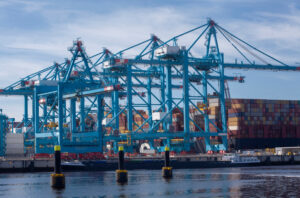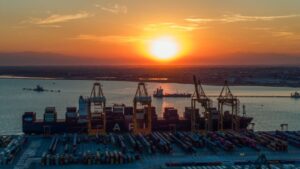Drewry Supply Chain Advisors’ recent whitepaper entitled ‘A Best-Route’; a market study for containerised imports to South Germany’, has found that the traditional gateway ports in North-Western Europe no longer hold all of the trump cards.
A recently published whitepaper from Drewry’s Supply Chain Advisors looking at the ‘Best Routes’ for containerised imports into South Germany from China found that for some shippers using Mediterranean gateway ports, this is a viable alternative to the traditional North-West Europe gateways.
To establish shippers’ best-route Drewry examined a variety of routes to find the best mix of cost, transit time and the number of service options.
Firstly, the whitepaper looked at the number of maritime services from Shanghai to South Germany’s so-called Northern and Southern gates that were available to the market as of March, 2016.
(Source: Drewry Supply Chain Advisors)
Here Drewry found that there were far more weekly connections to the two major Northern gateway ports of Rotterdam and Hamburg, but while South gate ports had fewer services, they had the advantage of faster transit times, by virtue of being in closer proximity to Shanghai.
Then we looked at the intermodal connections between those gateway ports and five logistics clusters in South Germany. Here we present some of the findings for Munich, the best connected of those clusters with rail connections to all of the relevant ports.
The cheapest option for Southern Germany shippers was via Rotterdam and Hamburg, but only by a margin of US$150 and $100, respectively against Koper in Slovenia, which has a three-day transit time advantage.
As such, Drewry believe Shanghai-to-Munich via Koper is a true ‘Best-Route’ contender for shippers with time sensitive cargoes.
There are also other reasons why Drewry thinks the Southern gate will become more competitive. Firstly, the ocean freight rate differential for cargoes from Asia to North and South European ports is changing; the former has traditionally been cheapest but in the fourth quarter 2015 the World Container Index reported that ex-Shanghai rates to the Mediterranean were lower than to North Europe in 10 out of 14 weeks.
Secondly, several South European intermodal operators are developing exciting and competitive concepts. These efforts will be boosted when the Gotthard Base Tunnel (GBT) opens in June.
The GBT will be the world’s longest traffic tunnel and will allow rail operators to improve their efficiency by increasing the length of the trains and reducing the travel time when crossing the Alps. Once this translates into cheaper rail rates, the area where the Southern Gate can compete will expand further North.
The Drewry View: More shippers will look to route via Southern gateway ports as the maritime price differential equalises and intermodal connectivity improves.










